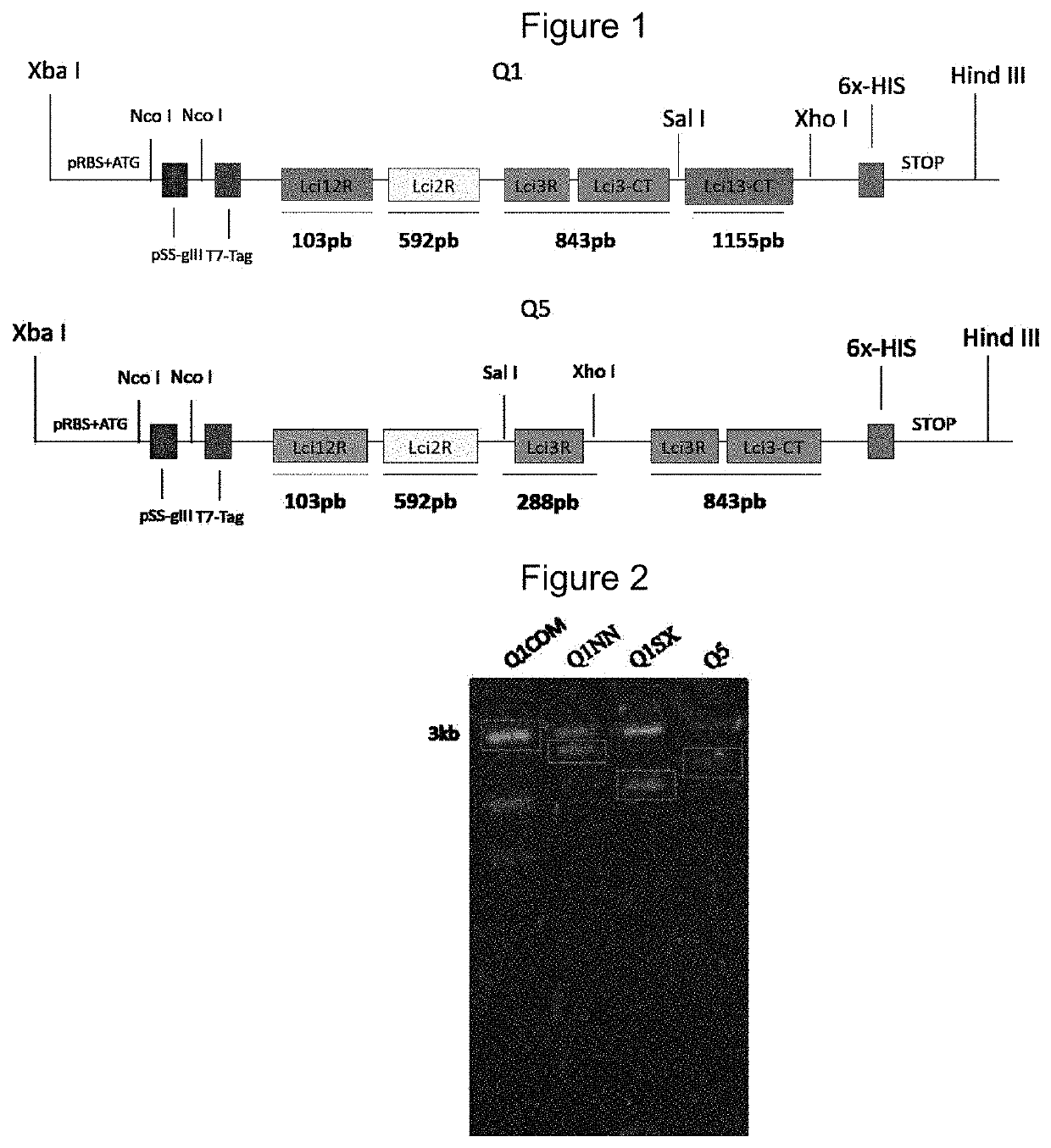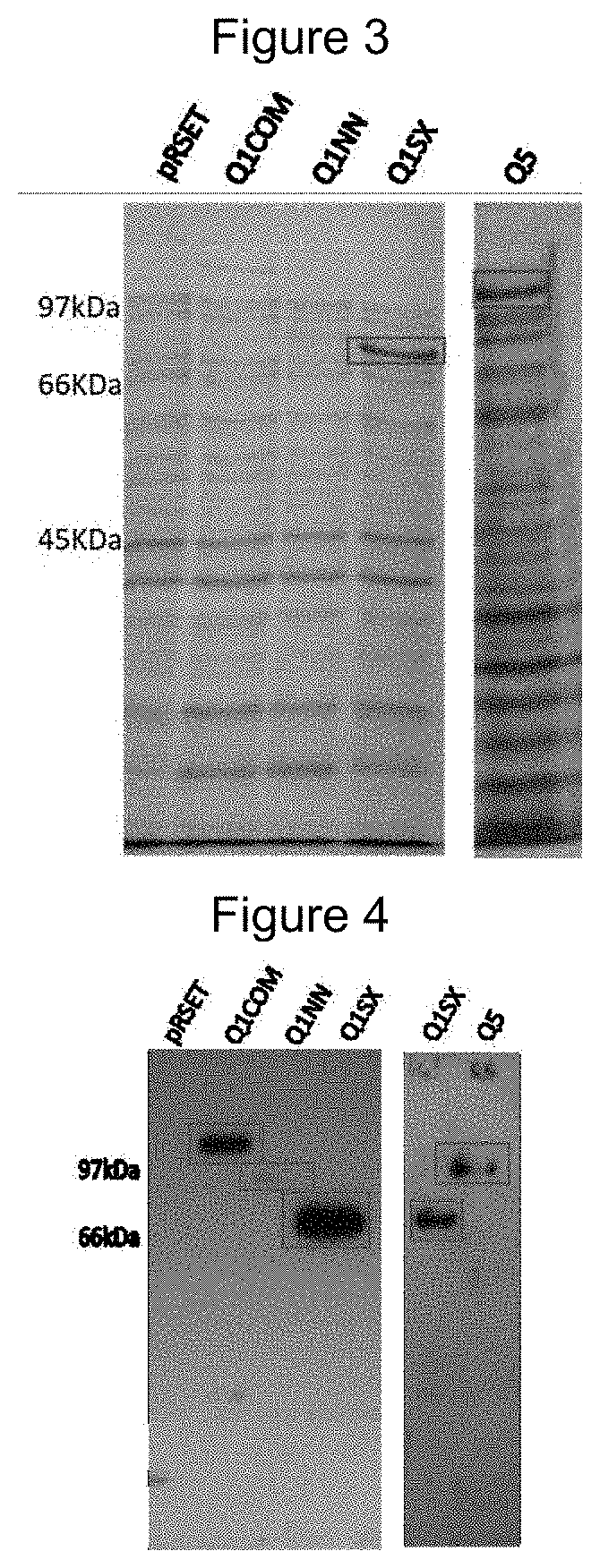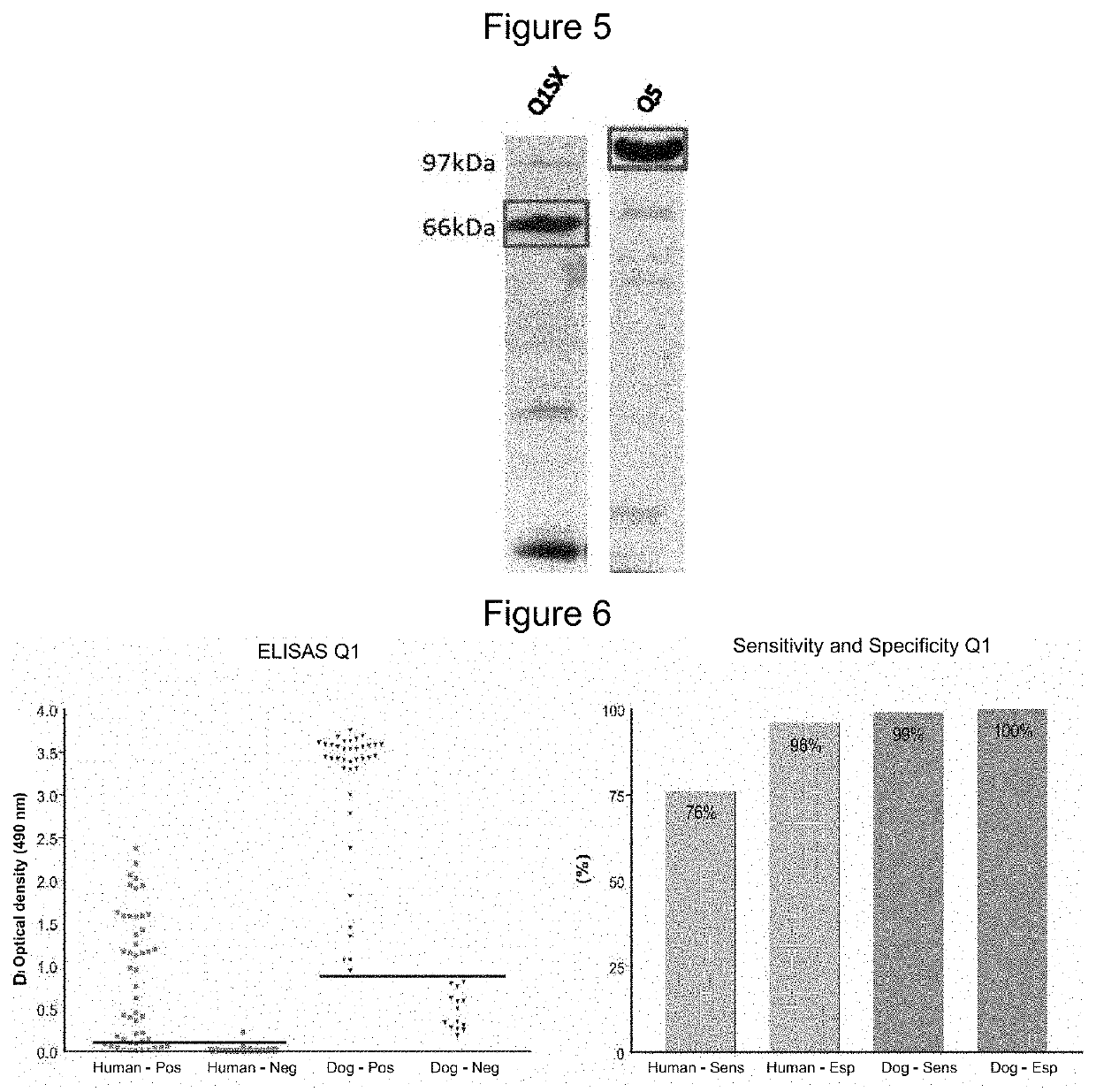Chimeric protein, method of production and use thereof, and also a nucleic acid molecule, expression cassette, expression vector, host cell, composition for the diagnosis of leishmaniasis, kit for the diagnosis of leishmaniasis and method of diagnosis of leishmaniasis in vitro
a chimeric protein and protein technology, applied in the field of polypeptides, can solve the problems of delayed diagnosis of disease, complicated treatment, and insensitivity of the host, and achieve the effect of reducing the number of patients
- Summary
- Abstract
- Description
- Claims
- Application Information
AI Technical Summary
Benefits of technology
Problems solved by technology
Method used
Image
Examples
example 1
Bioinformatics Methods, Chemical Synthesis and Subcloning of Chimeric Genes
[0135]The prediction of the presence of linear B-cell epitopes in the sequences of selected proteins (Lci2, Lci3 and Lci12) was performed by the program BCPred12 (EL?MANZALAWY; DOBBS; HONAVAR, 2008). The sequences of the chimeric genes optimized for the expression in Escherichia coli were designed using the Gendesigner program (WELCH et al., 2011) and their commercial synthesis carried out by GenScript companies (GenScript, Piscataway, N.J., USA) (Q1 protein) and Thermo (Life Tech, Sao Paulo, Brazil). (Q5 protein).
[0136]These genes were delivered already cloned into the commercial vector pUC57 flanked by restriction sites for the enzymes XbaI / HindIII. For subcloning into the bacterial expression vector, pRSETa (Thermo Life Tech, Sao Paulo, Brazil), the chimeric genes were recovered by double digestion with the restriction enzymes XbaI / HindIII and subcloned into the same sites of the pRSETa vector.
[0137]After ...
example 2
Expression and Purification of Recombinant Proteins
[0138]For the expression of the chimeric protein, plasmid constructs derived from the pRSETa vector were transformed into competent E. coli Rosetta™ 2 cells (Merck Millipore) followed by selection on LB medium (Luria Bertani) ampicillin-supplemented solid (100 μg / ml) and chloramphenicol (34 μg / ml) at 37° C.
[0139]Clones of the transformed cells were grown in liquid LB medium with the same concentrations of antibiotics and induction of expression of the recombinant proteins performed by adding IPTG to a final concentration of 0.1 mM, at an optical density (D.O) from 0.6 to 0.8 at 600 nm.
[0140]The result was visualized using a polyacrylamide gel (SDS-PAGE 15%) after staining the gel with Comassie Blue R-250. To obtain recombinant proteins, cell pellets obtained after the induction were resuspended in 20 mL of lysis buffer and equilibrated (100 mM sodium phosphate, 10 mM Tris, 8 M Urea, 20 mM imidazole—pH 8.0) and solubilized by ultraso...
example 3
Western Blot Assays
[0142]For Western-blot assays chimeric proteins were fractionated on 15% SDS-PAGE gels and transferred to PVDF membranes (Immobilon-P Millipore®) which were blocked in TBS buffer (20 mM Tris, 500 mM NaCl, pH7,5) supplemented with 5% skim milk and 1% Tween-20.
[0143]The membranes were then incubated with the antibodies / sera against the target proteins at final dilutions of 1:3000 and 1:1000 in TBS buffer with 5% milk and 1% Tween-20. After washing with 1% TBS / Tween-20, a new incubation with rabbit anti IgG was performed, labeled with peroxidase, (Jackson Immunoresearch Laboratories), diluted 1:10000 in TBS buffer with 5% milk and 1% Tween-20.
[0144]After further washing, the membranes were revealed in a solution of 1.2 mM luminol, 0.4 mM iodophenol and 0.03% hydrogen peroxide for 2 minutes. These membranes were then dried and exposed to autoradiography film for 1 and 5 minutes, followed by developing the film.
PUM
| Property | Measurement | Unit |
|---|---|---|
| Fraction | aaaaa | aaaaa |
Abstract
Description
Claims
Application Information
 Login to View More
Login to View More - R&D
- Intellectual Property
- Life Sciences
- Materials
- Tech Scout
- Unparalleled Data Quality
- Higher Quality Content
- 60% Fewer Hallucinations
Browse by: Latest US Patents, China's latest patents, Technical Efficacy Thesaurus, Application Domain, Technology Topic, Popular Technical Reports.
© 2025 PatSnap. All rights reserved.Legal|Privacy policy|Modern Slavery Act Transparency Statement|Sitemap|About US| Contact US: help@patsnap.com



